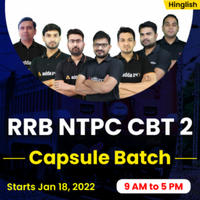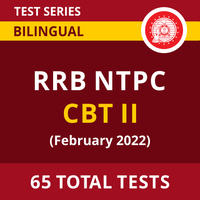Indian Railways is a government organization owned by the Government of India under the Ministery of Railway. Indian Railways is the fourth-largest railway network in the world by size. Indian Railway is a reputed government organization trusted by the general audience of India for transport. The first railway proposal for India was made in Madras in 1832. The first train of India was from Red Hills to the Chintadripet bridge in Madras in 1837 named as Red Hill Railway. By now the railway network has grown from every small village to the city for the ease of passengers. The National Rail Plan information has been given by Railway Minister Ashwini Vaishnaw as a written reply to the issues raised in Rajya Sabha.
Indian Railways has prepared the National Rail Plan for India – 2030. Under this plan, railways will be meeting all the capable requirements of passengers with a world-class benchmark in services. Railway Minister Ashwini Vaishnav has proposed the National Rail Plan 2030 in Rajya Sabha. The plan has been prepared by keeping in mind all the emerging requirements and developments of railways till 2050, the Centre has prepared a holistic National Rail Plan for India-2030 (NRP). The implementation of the plan will make the railways a 'future ready' system by 2030.
National Rail Plan (NRP)'s goal is to formulate strategies based on both operational capacities and commercial policy initiatives to increase the modal share of the Railways in freight to 45%. The main objective of the Plan is to produce capacity ahead of demand, which in turn would also feed to unborn growth in demand right up to 2050 and also increase the modal share of Railways to 45% in freight business and to continue to sustain it. To achieve this all possible fiscal models including Public-Private Partnership (PPP) are being considered.
As Indian Railways is the growth machine of the nation, NRP is aimed to reform Railways to make it more effective, greener, and ultramodern which will restate into cheaper, safer, and assured mode of transport to the common man be it in passenger or freight member.
To achieve the aimed goal of Indian Railways, the following main features are developed :
- Formulate strategies based on both operational capacities and commercial policy initiatives to increase the modal share of the Railways in freight to 45%.
- Reduce transit time of freight substantially by increasing the average speed of freight trains to 50Kmph.
- As part of the National Rail Plan, Vision 2024 has been launched for accelerated implementation of certain critical projects by 2024 such as 100% electrification, multi-tracking of congested routes, up-gradation of speed to 160 mph on Delhi-Howrah and Delhi-Mumbai routes, up-gradation of speed to 130kmph on all other Golden Quadrilateral-Golden Diagonal (GQ/GD) routes and elimination of all Level Crossings on all GQ/GD route.
- Identify new Dedicated Freight Corridors.
- Identify new High-Speed Rail Corridors.
- Assess rolling stock requirement for passenger traffic as well as wagon requirement for freight.
- Assess Locomotive requirements to meet twin objectives of 100% electrification (Green Energy) and increasing freight modal share.
- Assess the total investment in capital that would be required along with a periodical break up.
- Sustained involvement of the Private Sector in areas like operations and ownership of rolling stock, development of freight and passenger terminals, development/operations of track infrastructure, etc.
You may also like to read this:

